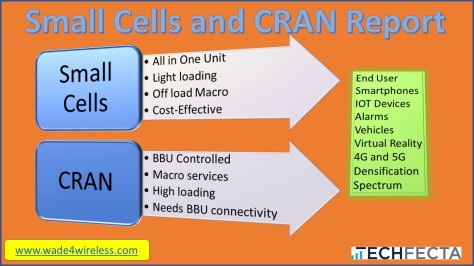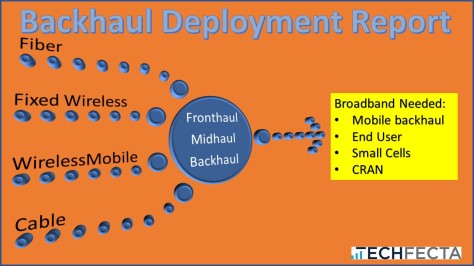
OK, the photo is a joke, get it?
You don’t insert eSIMs.
You didn’t have anything like SIMs on the old phones. They were not wireless.
On the really old phones, you couldn’t dial, you just picked it up and tried to get the operator to connect you. Today we talk to Siri or Alexa, not an operator. Could you imagine doing that today? Just pick up the phone and say, “Hey operator, connect me to Wild Bill across the way?” Then mysteriously, old Wild Bill picks up and complains that he was on the toilet when you called! Oh, right, we can ask Siri to call Wild Bill and the same thing happens. I guess we really have come full circle, haven’t we?
No MVNOs or wireless carriers in those days, sadly. No choice of phones. No purple, yellow, or rose gold. You got the black phone and you liked it. It was an expensive utility and you could only call local without paying more money. Calling outside your local area was considered long distance. It was expensive, just like roaming charges, only wired.
No voicemail. No text messages. No apps. No internet. Just good old-fashioned talking, unless they didn’t answer and you got on with your day.
As I said, you liked it. If you remember a time before wireless phones, you liked your old phone up until you were on call for work. Then it sucked.
I wrote this article because I think eSIMs are going to help change the way telecom looks at devices. We need devices but only as an interface. Hardware solution with apps and software being the product. I believe eSIMs will accelerate that ecosystem.
First off, what is a SIM? A Subscriber Identity Module (SIM) card has a unique code to identify you on a network. You add the chip to your phone to activate it so it works on your carrier’s network. It gives you permission to work on a specific network and pay that carrier/MVNO in the process. Think of it as a Wi-Fi certificate on steroids. You need it to work on a network. Still curious? Look here.
What is an eSIM? Well, eSIM is an embedded Subscriber Identity Module. Just like the SIM, only it’s a pre-installed chip where you enter a unique code that becomes embedded on a much smaller chip. It’s so much easier to add because you can scan a QR code or enter an ID. If you live in the US, think of Microsoft Authenticator crossed with a social security number. Instead of an external module, you enter a code. How cool is that?
The eSIM was originally introduced by the GSM Alliance. For smartphones, it was Apple that ran with the idea and pushed it into prime time. Pretty sexy, right?
Oh, just so you know, this is also the way you’re tracked by governments. They get your information from a carrier and then they can track your mobile digital device. All you do on that device. Now, suddenly it seems scary, and not so sexy. (Unless you’re in law enforcement tracking criminals or in a dictatorship/communist government spying on the masses.)
Why does Apple like it? Think if you had to design the new iPhone. The eSIM chip is smaller than the SIM chip. It eliminates an opening in the device, preventing water damage as well as losing the bracket to hold the physical SIM. It’s quicker to get the phone activated, especially if you have to wait for the carrier to ship you a real SIM. One less thing to worry about. It uses less energy saving battery life. It’s probably cheaper, but I don’t see any prices dropping. IoT devices, on the other hand, have to be as cheap as possible to make the business case work.
For the carrier and MVNOs, there is no need to carry physical inventory. I see this as an opportunity for MVNOs to ramp up direct to the end user offering almost immediate activation. Let people buy their own devices from whoever.
How convenient! It kind of makes sense, right?
It makes the phone setup easier and for the carrier or MVNO, they have lower overhead and no stock. So much easier on both sides.
I think dual eSIM would be easier to switch back and forth, although I am not sure what the advantages would be. Maybe if you travel between countries or if you have an open device and like to use 2 networks for coverage, that makes sense too if both countries allow eSIMs. It could be if you have a work number and a home number you could quickly switch. Maybe to go from private to public networks, although I am not clear on that right now. I just don’t have all the answers.
Why would an MVNO care about eSIMs?
I think Mint Mobile and Ultra Mobile were sold to T-Mobile at the perfect time. Why? Because eSIMs are going to allow the mini MVNO to take off.
Imagine this. If a carrier can sell large data and voice plan with bundled eSIMs, all on a website. Before, the MVNO had to store the physical SIM somewhere, but that no longer applies. No more physical inventory. Create a simple contract, much like what AWS and Google have done with small businesses. Why do carriers make it so hard and confusing? Keep it Simple Stupid (KISS). I get it because I am simple and stupid, just ask my wife.
Many MVNOs do this today but they have been shipping SIMs and they try to sell devices. For Visible, Mint, and others, now they can sign people up by having them sign up and scan a QR code. I think it could be that simple. Why not? Those MVNOs have done a great job reaching end users.
Mint has Ryan Reynolds, who hasn’t hurt them.
It could even allow the smartphone vending machines to come back, would that be amazing?
By the way, Alibaba sells these. So yes, they are a thing.
You can already see chargers and cell battery vending machines at most airports.
How secure will eSIMs be?
The FCC has a site answering questions about eSIMS. I recommend reading the FAQ.
There they talk about the security of eSIMs. An eSIM can’t be stolen like a SIM. It remains inside the phone. Of course, the device can still be stolen.
However, you still have your hackers trying to steal. You still have people who may figure out how to create fake eSIMs. It’s still a possibility. One that will probably be attempted. We just have to face it, there’s always someone trying to beat any system.
I think they will be as secure as the network will allow them to be. Currently, it’s pretty solid.
I did see an article, found here, where there is a way to hack it but it relies on social engineering and lazy carrier representatives to actually make it happen. It’s not easy or intuitive and relies more on human laziness and error rather than hacker superiority.
What about IOT?
IoT devices could use the eSIM but Deutsche Telekom came up with an iSIM or integrated SIM which is smaller than the eSIM chip. WOW! This may replace the eSIM someday, but for IOT it makes sense. Learn more here.
If it can be made smaller and use less energy, then it makes sense.
Who wins with eSIMs?
I always think the carriers win. More devices mean more income, right? Even if it’s the low trickling income of IoT devices that only pay pennies a month. It’s still revenue.
I know IoT was supposed to pay off big, AT&T bet big for it, but the revenue of these connections is relatively low since you need 10 (or more) times as many connections to make up for a smartphone or Fixed Wireless Access (FWA).
IoT is not as attractive to carriers as one might think.
I honestly think that MVNOs will start popping up more and more if the carriers can make the packages attractive. Why would a mini MVNO want to sign up maybe a thousand or so users under their own name? Whether it’s IoT devices or the latest smartphone. They may want to offer local service to their school, municipality, or town without waiting for the carrier to open a store or the hassles of ordering online only to find out the coverage sucks.
I think it could be a win for the carriers to automate this process. They could close stores, offload the sales to MVNO resellers, and gain revenue. It may be prepaid or monthly, either way, they can become the utility and let independent resellers connect in smaller markets.
Maybe my vision is too simplistic, but I remember talking to a carrier about automating this process some time back. They seemed to be moving ahead with a model like this, but then, like so many small ventures in large corporations, it faded away. I am guessing that whoever was driving it moved on to something different.
It isn’t easy being an entrepreneur in a large company without executive sponsorship. Executives don’t often get the bigger picture unless it’s very safe.
What’s next for eSIMS?
As for the eSIM, I am hoping it simplifies setting up devices. Whether a smartphone or a thing. I want something easy and simple. I think this is going to make things better and open up more opportunities for the carriers.
I see opportunities for hyperscalers to actually build up their MVNO models and perhaps compete with cable companies.
We will see eSIMsl dominate and the SIM will eventually fade away or at least fade to a niche market.
I believe this creates an opening for mini MVNOs to start up a business using the carriers in their specific local market if there’s coverage. Why not? No more physical inventory, at least SIM cards. Now they can just have the end user buy the smartphone to IoT device from Amazon, get online to receive the eSIM, and sign up for service, and they’re done! Visible and Mint had very similar models. It was all online and easy.
Amazon has plenty of phone plan options through MVNOs, it’s so easy to get on and sign up today. They ship you the plan and the SIM, prepaid, done.
Oh, eventually we may migrate to iSIMs for everything, who knows?
As for the future of SIMs……
However, 10 years from now, physical SIMs may be considered suspicious activity. The main thing law enforcement doesn’t like is how people using SIMs are constantly switching devices. This could look suspicious. I believe law enforcement will look at devices using regular SIMs and wonder why.
Today, SIM swapping fraud is a thing, it’s being monitored. Hackers are so savvy. I am not sure we will ever get past these scams.
Why bring this up? I believe the FBI tracks more than we know today. Why do I single out the FBI? Did the FBI censor or influence Twitter? Not monitor or track, but actually censor tweets that appeared to help one political candidate over another? I have to wonder. When I say censor, they may have directly done it or indirectly influenced it. Even Mark Zuckerberg talks about how the FBI came in to influence which information should be shared. They were very specific. What else would they censor/influence just because they can? What else could they manipulate? Why did they do that?
That’s another article, but it opens the door to the FBI influencing other activity, doesn’t it? Democracy is awesome especially because things like this usually come to light. Yet, political manipulation happens, even in the US. I love the United States for freedom and because things like this always come to light, eventually. The truth is out there, we just have to find it. If you think we have it bad, ready anything about anyone who escaped from North Korea, then ask that question again. I recommend a book I recently read called “The Girl With Seven Names: A North Korean Defector’s Story” by Hyeonseo Lee.
Just in case you missed it….
You have to give T-Mobile credit. They just bought Ultra and Mint, meaning they will get Ryan Reynolds commercials. Let’s face it, we enjoy most of the Mint commercials on YouTube. However, they also had a brilliant FWA commercial with John Travolta, Donald Faison, and Zach Braff. So much fun to watch!! Doesn’t it make you want to get FWA today?




























